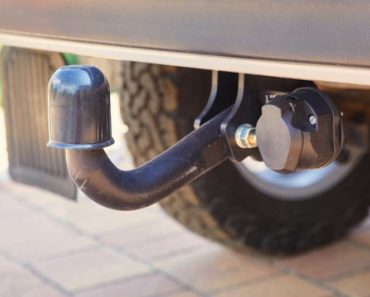The very first electric cars were built as early as the 1830s. Yes, that was 1830s, that’s not a typo. Not much happened with them, because of a lack of commercial electricity. It wasn’t until the 1870s that they really hit the streets. Basically, the idea of electric cars has existed longer than gas-powered ones. Yet the electric car crowd acts like it’s something new. What’s new isn’t the idea of electric cars, but the push to force everyone to switch over from internal combustion engines.
I’ve seen people raise the question about whether we, as preppers, should consider an electric car as a bug out vehicle or an alternative means of transportation in a post-disaster world, where gasoline might be hard to come by. But does that really make sense?
Before getting into that, let me say that I like the idea of electric cars, at least in theory. I remember drawing pictures of solar-powered cars as a kid. But I have to say that the technology we have available to us today isn’t anywhere near as great as the technology in those pictures. Electric cars are expensive to buy and expensive to maintain; and the range you get out of a charge hasn’t come close to what the proponents of electric cars have promised us.
Electric Cars and Bugging Out
The idea of bugging out in an electric car is scary to me. If there’s one thing I want, when I’m bugging out, it’s range. I’m not even comfortable with the range of a gas-burner, let alone electric cars. As I see it, it’s unlikely that any of us can succeed in bugging out with a single tank of gas, especially if a lot of others are bugging out at the same time. Just where are we going to find gas to refill? As we’ve all seen, when there are general evacuations for hurricanes and other disasters, the gas stations quickly run out.
Finding electric car charging stations is even worse. People who try and travel in electric cars find that charging stations are few and far between. The Energy Secretary, Jennifer Granholm, tried taking a trip in an electric car recently, as a publicity stunt to promote electric cars, and ended up with bad press. Not only did she have trouble finding places to recharge, but ended up in a confrontation where a family called the police on her, because staff members had driven ahead to try and reserve a charging station for her.
We could easily make fun of the fact that the staffers in this case were driving gas-burning cars, in order to provide “support” to the Energy Secretary’s publicity stunt. Somehow that has managed to escape the attention of reporters though.
Of course, if the power goes out due to a disaster, that means those charging stations will too. I suppose electric cars could be recharged off a gas or diesel generator; but doesn’t that eliminate the whole “benefit” of buying an electric car in the first place? The same gasoline that’s needed to recharge one electric car could probably pump gas for a whole lot of gas-burners.
Range has always been an issue with electric cars, because of the massive amount of electricity they need to store and the weight of the batteries to store all that electricity. Some progress has been made by using regenerative braking, where braking the vehicle produces electricity to recharge the batteries. But while that does extend the range of electric vehicles in the city, there’s just not much need for braking on an interstate highway. This makes it so the range of these vehicles is much worse on the open road, than it is in town.
Finally, weight is a real issue to contend with. Most preppers pick trucks and SUVs for their bug out vehicles, so that they’ll have the space and weight-carrying capacity needed for their gear and supplies. But all that weight has a negative impact on range; to the point where one EV truck owner couldn’t make it 100 miles in his new truck, pulling a trailer. Oops.
Electric Cars in a Post-Disaster World
While electric cars don’t look like they will be any good in a bug out, does that mean they won’t be good for anything? What about using those cars for transportation, when gasoline is hard to come by?
Many of us have invested in at least some solar power, just to make sure that we have at least some electricity available to us in the event of a disaster that takes the grid down. But does that mean we’ll have enough to charge an electric car too? Probably not.
I got a bid once on having solar power installed on my house. For enough solar panels to provide me with my “average” usage, I was going to have to pay $60,000. Needless to say, I didn’t spend that money, as I couldn’t afford that big an investment, even if I did believe the salesman, who promised that it would pay for itself with my electricity savings (I wasn’t so sure about that).
Here’s the thing though, even that wouldn’t have provided me enough electricity to charge an EV, if they could have found enough space on my roof for that many panels. That was just for the house. Since EVs get 3 to 4 miles per kilowatt-hour (kWh), according to JD Powers, recharging after only driving 100 miles would work out to 25 to 33 kWh. Using solar panels that produce 250 watts per hour, it would require 100 to 130 solar panels to recharge that car in one day. (A solar panel only puts out full power for about 8 hours per day).
By the way, a quick calculation on the cost of those solar panels, just buying them, not including installation, works out to about $30,000 retail for 100 panels.
Looking at that another way, enough solar panels to provide that 25 kWh would require 1,650 sq. ft. of south-facing roof. To have enough solar panels to recharge 33 kWh would require 2,145 sq. ft. of south-facing roof. If the panels aren’t mounted on a south-facing roof, at the correct angle to maximize their efficiency (they rarely are mounted at that angle), they won’t produce enough power to fully charge the EV.
While I suppose this doesn’t totally rule out the idea of using an EV and charging it from solar power, it makes it rather unrealistic for most of us. Unless you’re made a fortune in Silicon Valley and have the money to buy your own island in the Pacific Northwest, I doubt you can afford doing that. For that matter, I doubt you have enough south-facing roof space for all those solar panels. Oh, and if you do own an island in the Pacific Northwest, you’re going to need more panels, thanks to the rain.
Electric Cars to Help you Prep
The third area where we might want to consider using an electric car is now, while things are more or less fine and we are preparing for a coming disaster. In that scenario, an EV might actually be useful. The more traditional view of EVs is as an around-town commuter and errand car. They work well for that and are even cheaper per mile to drive, than a typical gas-burning vehicle. Using the same figures I used to calculate how many solar panels would be needed, it costs somewhere between $10 and $14 to charge an electric vehicle for 300 miles of use, which is about how many miles most of us get before filling our car’s gas tank.
This doesn’t take into account the cost of the car; and as we all know EVs are more expensive than comparable gas-burners. So, in order to gain this savings, you’re going to need to buy one of the lower cost electric cars, not Tesla’s luxury model. According to Car and Driver, the lowest cost EVs out there are the Chevrolet Bolt and Nissan Leaf. It looks like there are a total of 10 models available for less than $43,000.
The question becomes – do you want to buy an electric car? Personally, I can’t see a whole lot of reason to do so, but you might see things differently. This is a very personal decision, regardless of all the politics that are pushing the issue around. From where I sit, it looks like most of the people who are buying these cars are on the political left, which means that they are unlikely to be preppers.
Nobody should consider buying an EV as their only vehicle, especially if they are a prepper. This is still new technology and it has lots of problems that still need to be ironed out. One of those problems is the high cost of maintenance, which can’t be done by the typical mechanic. You can’t even have your local mechanic replace light bulbs, let alone doing something involving the battery or drive motors.
A Word of Advice
Perhaps as the technology improves, EVs will become more useful. But I think they’ll be shoved down our throats before that happens. With that being the case, I would recommend that you keep one old, but simple car around, even if it’s up on blocks in your backyard, so that you’ll have something to drive, when everyone else is wondering how they’ll charge their EV during a power outage. Considering the high probability of the power going out in any disaster, that old gas-burner might end up being worth its weight in gold.







![[VIDEO] Pocket Survival Kit (PSK) – Containers [VIDEO] Pocket Survival Kit (PSK) – Containers](https://survivalcove.com/wp-content/uploads/2023/08/CachePSK4-370x297.jpg)




















